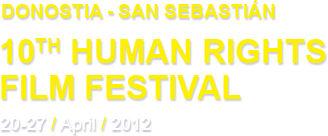- Home
- Topics
- All topics
- Moles: in hiding from repression under Franco
Moles: in hiding from repression under Franco
The drama of war is not only limited to the victims caused, but lives on in the situations that arise as a result and continue to exist. In the years following 1939, when end of the Spanish Civil War was officially announced, many fighters, sympathisers and people in public positions with the legitimate Republican Government had to go into hiding to avoid Franco-fired repression. Raids, house searches and police checkpoints in the streets and roads were a regular event. Their persecution was persistent, and they were more than likely to be executed if found.
If it was already an enormous risk to try and escape in Spain itself, the start of World War II made it practically impossible. The Spanish borders were closed and the political situation in the neighbouring countries became much more complicated. Portugal was under the dictatorship of Salazar, Franco’s ally; Morocco was controlled by Franco’s regime, and France was occupied by the Nazis. Those attempting to flee, unless they made it to a truly democratic country, were captured and handed over to Franco’s forces; such was the case of Juan Hidalgo, who fled to Portugal only to be turned in to the regime forces.
The impossibility of escaping death or running away meant that hiding was the only immediate option of survival for these people who were kept going in their places of imprisonment by the hope of being able to change the situation. Use of the term “mole” to describe them was coined by the journalists Manuel Leguineche and Jesús Torbado, authors of the book Los topos (The Moles), published in 1977. This book narrates the experiences of 24 people who for years, and sometimes for decades, suffered darkness, repression and fear. Far from what had initially been thought, the situation that drove them to go into hiding in their own homes, in infamous holes or wedged between double walls, continued for thirty long years. Until, finally, in 1969, a document was published in Spain’s Official State Gazette, announcing the amnesty which pardoned the alleged crimes committed during the Civil War. However, some of them were so afraid they didn’t come out of their hiding places until Franco had died.
Some of the best known cases were those of Manuel Cortés Quero, the last Republican mayor of Mijas (Malaga), subject of the documentary 30 años de oscuridad (Thirty Years of Darkness), who remained in hiding from 1939 to 1969, or Eulogio de Vega, the Socialist mayor of Rueda (Valladolid), who stayed hidden until 1964. Perhaps one of the longest was the case of Protasio Montalvo, the mayor of Cercedilla (Madrid), who only came back out into the open in 1977, by which time the process of transition had begun.
During these enforced incarcerations, the women played enormously important roles, having to work their fingers to the bone to keep their families. Many of them had to spend the entire day working away from home to scrape a miserable living, not knowing what could be happening while they weren’t there. When they came back at night, they would live the true drama of freedom lost, in absolute secrecy. The tension borne by these women and the family members with whom they shared the secret was continuous, always accompanied by the fear of being found out. As a precaution, it was also common to keep the presence of the “mole” in the house from their sons, daughters and grandchildren until they became old enough to understand.
Today the testimonies of direct relations who also experienced repression in some way or another describe through their own experiences and memories the horror of the captivity, but they also give us insight to the reality that the victims of reprisal never had the opportunity to tell us themselves. They similarly give us an idea of the terrible collective drama that marked their lives and those of the people closest to them, all in the not too distant past. The objective of this documentary is to ensure that these events in our recent history are not forgotten.
Film: 30 años de oscuridad









